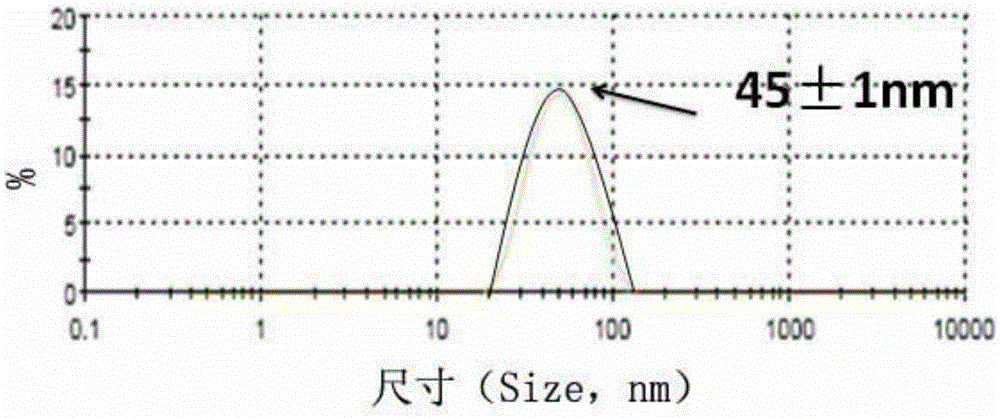A kind of preparation method of water-based acrylate emulsion for coating
A water-based acrylate and solid acrylic technology, applied in the field of polymer material preparation, can solve problems such as increasing system VOC and production costs, affecting construction and user health, and discussing high temperature anti-sticking, so as to overcome inconvenience in construction or environmental pollution. , easy to control, the effect of improving wear resistance
- Summary
- Abstract
- Description
- Claims
- Application Information
AI Technical Summary
Problems solved by technology
Method used
Image
Examples
Embodiment 1
[0041] 1. Add 61.65g of Johnson resin J-671, 8g of triallylamine, and 356.3g of water into the reaction kettle, stir until completely dissolved, and raise the temperature to 80°C to obtain system 1.
[0042] 2. Mix 100g of styrene, 20g of methyl methacrylate, 60g of n-butyl acrylate, 25g of n-butyl methacrylate and 2.05g of methacrylic acid, and add them dropwise to system 1 in 3 hours, while dissolving 0.6 Add 20 g of water in 1 g of ammonium persulfate dropwise to System 1 in 3 hours to obtain System 2.
[0043] 3. Heat system 2 to 90°C, keep it warm for 1.5h, cool down to room temperature, adjust the pH value to about 8, and filter out.
[0044] From figure 1 It can be seen in the T of the solid resin g at around 128°C, while the T of the acrylate copolymer g Around 34°C; figure 2 It can be seen that the average particle size is 45nm, and the resulting emulsion is translucent.
[0045]
[0046] Examples mentioned in the average T g Calculated according to the FOX ...
Embodiment 2
[0048] 1. Add 40.88g of Hanwha Resin S-120, 4g of diallylamine, and 356.3g of water into the reaction kettle, stir until completely dissolved, and raise the temperature to 80°C to obtain System 1.
[0049] 2. Mix 102.5g of styrene, 20g of methyl methacrylate, 55g of n-butyl acrylate, 26g of n-butyl methacrylate and 2.05g of methacrylic acid, and add them dropwise to system 1 within 3 hours. 0.6g of ammonium persulfate in 20g of water was added dropwise to system 1 within 3 hours to obtain system 2.
[0050] 3. Heat system 2 to 90°C, keep it warm for 1.5h, cool down to room temperature, adjust the pH value to about 8, and filter out.
[0051] 4. Add 9g of XR100 to system 3, and coat the film within 2 hours.
[0052]
[0053] Examples mentioned in the average T g Calculated according to the FOX equation; MFFT is the minimum film-forming temperature tester; the high-temperature back tack is that the coating film surface and the coating film surface are attached together at t...
Embodiment 3
[0055] 1. Add 80g of Johnson resin J-696, 4g of allylamine, and 385.3g of water into the reaction kettle, stir until completely dissolved, and raise the temperature to 80°C to obtain system 1.
[0056] 2. Mix 102.5g of styrene, 15g of methyl methacrylate, 67g of n-butyl acrylate, 26g of n-butyl methacrylate and 2.05g of methacrylic acid, and add them dropwise to system 1 in 3 hours, and dissolve the 0.6g of ammonium persulfate in 20g of water was added dropwise to system 1 within 3 hours to obtain system 2.
[0057] 3. Heat system 2 to 90°C, keep it warm for 1.5h, cool down to room temperature, adjust the pH value to about 8, and filter out.
[0058] 4. Add 9g of XR100 to system 3, and coat the film within 2 hours.
[0059]
[0060] Examples mentioned in the average T g Calculated according to the FOX equation; MFFT is the minimum film-forming temperature tester; the high-temperature back tack is that the coating film surface and the coating film surface are attached toge...
PUM
| Property | Measurement | Unit |
|---|---|---|
| glass transition temperature | aaaaa | aaaaa |
| particle diameter | aaaaa | aaaaa |
| glass transition temperature | aaaaa | aaaaa |
Abstract
Description
Claims
Application Information
 Login to View More
Login to View More - R&D
- Intellectual Property
- Life Sciences
- Materials
- Tech Scout
- Unparalleled Data Quality
- Higher Quality Content
- 60% Fewer Hallucinations
Browse by: Latest US Patents, China's latest patents, Technical Efficacy Thesaurus, Application Domain, Technology Topic, Popular Technical Reports.
© 2025 PatSnap. All rights reserved.Legal|Privacy policy|Modern Slavery Act Transparency Statement|Sitemap|About US| Contact US: help@patsnap.com



